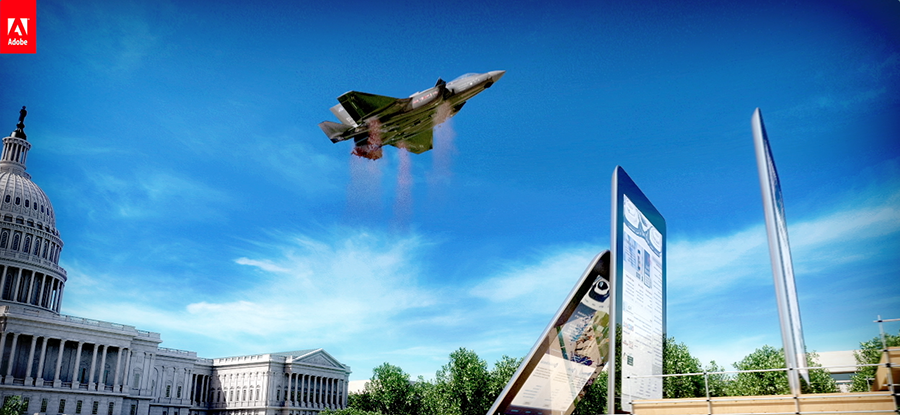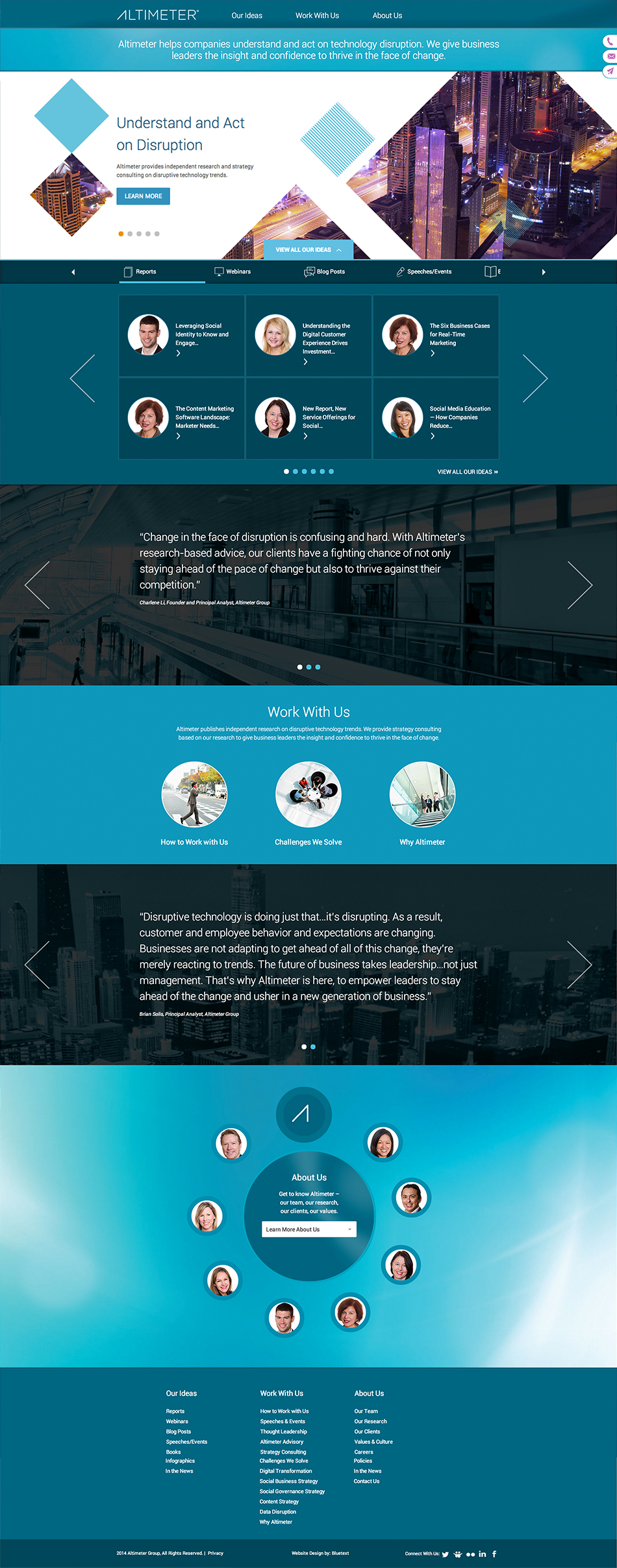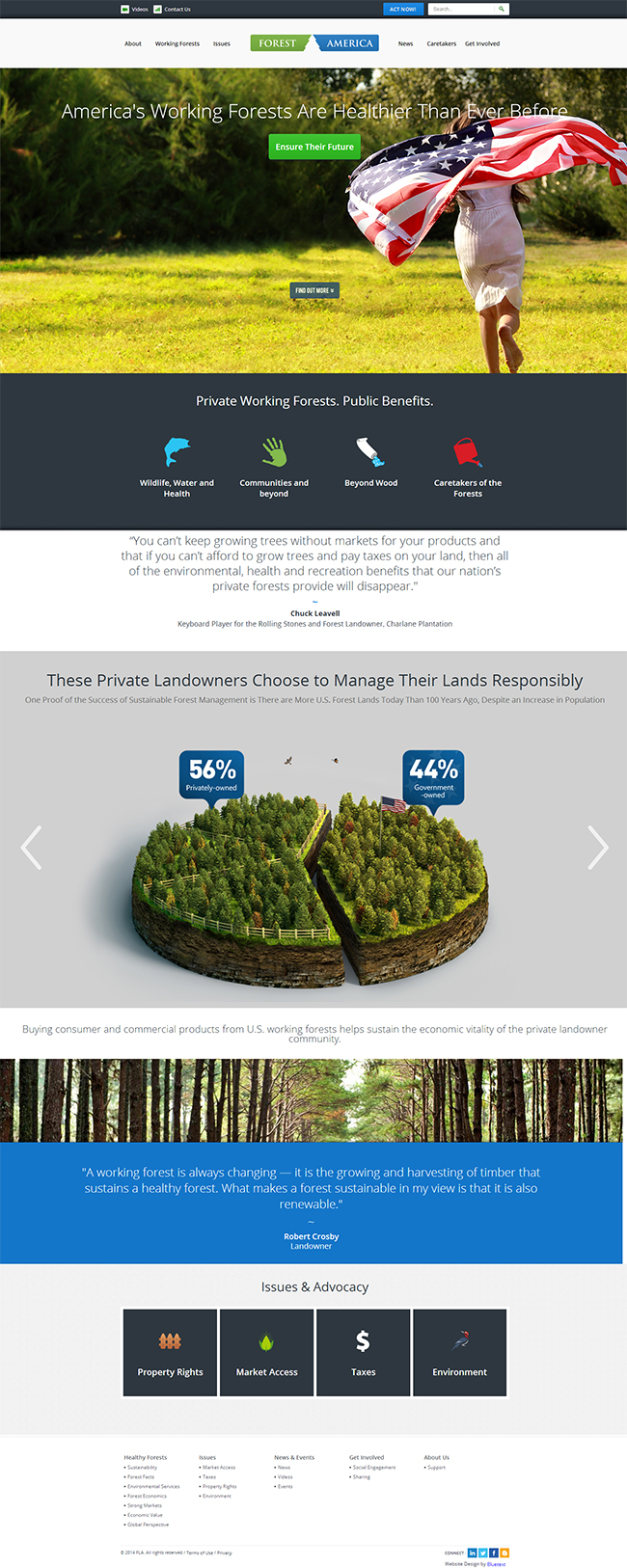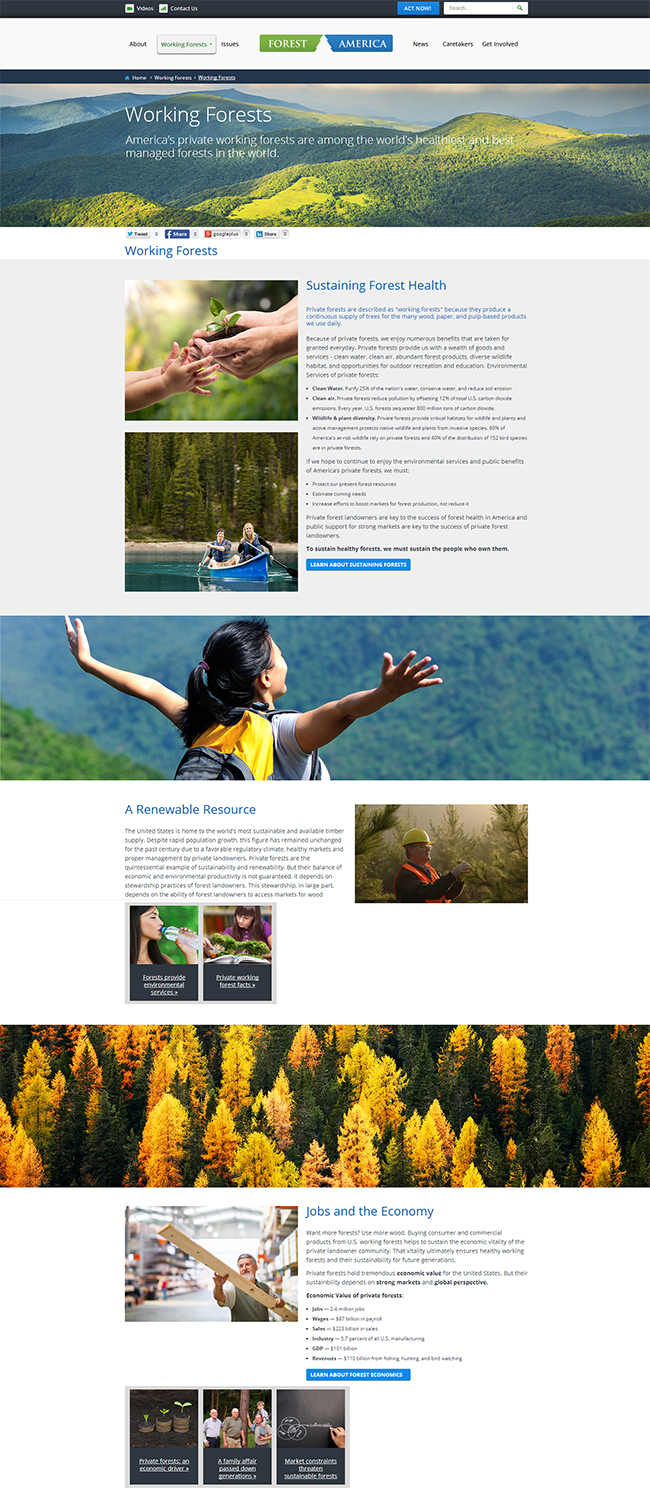This is certainly not news, but the amount of information available to target customers continues to grow by the day. Researching issues that might seem obscure and unique means sorting through dozens if not hundreds of options, regardless of how detailed or long-tale the search. The amount of information can be overwhelming, and quickly finding the best answers is becoming a more difficult challenge. This is especially true on the Internet, where chaos and complexity reign. The dilemma is that buyers don’t want to sort through the noise; they want simple choices to complex problems.
Brand simplification is one of the strategies that Bluetext is recommending to our clients as a way to reach customers with a message that resonates amongst the clutter. Paring down the brand to its core values can play across its presentation, its key messages, and even its logo. This is the essence of brand simplification, and it can be an effective approach when refreshing a brand.
People want choices; they just don’t want too many choices. The same is true when it comes to research on the Internet. They enter long-tale searches because short phrases offer too many options. Yet when they visit your site, are they quickly seeing the information that they want and need to engage with your brand, or are they confused about what you are stand for, what you are offering and how you’re different than your competitors?
For more established brands, simplifying the brand presentation to the market can convey both brand value and confidence in their relationship with their customers and a broader audience. We can see how this has played out with logos from Starbucks, Microsoft, and even Pepsi. In each case, the logos have evolved dramatically over time (and in the case of Pepsi, over a long period of time), beginning with a busier mark and moving to a more simplified design that retains many but not all of the original elements.
From logo to messaging to the larger brand presentation, this was the recent challenge facing the Altimeter Group, a successful research, analyst and consulting firm in the digital market based in Silicon Valley. It publishes a wide range of cutting-edge analyses on social media, native advertising and other trends that can help companies better engage consumers, and its team of experts has become a go-to resource for reporters and executives alike. When Altimeter Group wanted to update its brand, it turned to Bluetext. Bluetext designed a new, simplified approach, including how it presents its name, its image and all of its digital and physical assets.
We began with the simple premise that a brand simplification would help Altimeter deliver its core value and message more directly and effectively, and began with a recommendation to adopt Altimeter as a single word. The logo was streamlined with a contemporary design, and the color pallet and typefaces were revised to match.
A significant part of the brand refresh was a new website that engages visitors and provides information in a simplified and more direct approach. Instead of a multitude of confusing navigation options, Bluetext’s design offer three content paths – Our Ideas, Work With Us, and About Us. This approach allows visitors to quickly find the research they are looking for, how to engage Altimeter, and background on its team of experts without having to click through layers of pages. The content is highly search optimized.
Core to this approach is simplification of the way Altimeter tells its brand story, its new look and feel, and the way it engages its audience. When coming to the Altimeter site or seeing its new collateral and reports, there is no question about the story it wants to tell. There are still many content options for visitors to the new website, ranging from a broad selection of research to blog posts and articles from a variety of its experts. The difference is that the process to reach those options is simplified. The Altimeter team is easily found, navigation is reduced to its core elements, and messages are clear and direct. The new brand leverages the position that Altimeter has established, and will help take Altimeter to the next level in the market.
The landowners of America’s working private forests had a large challenge: Few people outside the forest landowners community understood how private forests were different from Federal and state-owned forests, how their landowners were managing the lands in a way that was sustainable, and how as a result our private forests are healthy and growing. Instead, the image was often based on mis-impressions and confusion. The landowners asked Bluetext to develop a new organization, together with a name and logo and a website that could serve as the repository for information about our private forests, the landowners who serve as caretakers while harvesting wood sustain-ably, and the issues they were are facing.
Bluetext proposed that this new organization be called Forest America, and designed a logo that would convey the important connection between our forest landowners and the conservation that they bring to America’s forests.
Bluetext designed a comprehensive website that is responsive for all devices and that uses wide banners and paralax images to give a strong sense of the value and beauty of privately owned forests. The site makes has calls-to-action to get involved throughout its pages as part of the strategy to recruit members and advocates for Forest America.
Bluetext also designed a multi-image infographic with key industry facts that is embedded in a sliding graphic that is accessed on the lower part of the homepage. Additional graphical elements include large banner images with text and compelling photography throughout. Forest America includes social engagement links, and in its next phase will embed polling functions and advocacy tools that will not only make it an effective tool with policy makers but also generate its own content that can be pushed out through its various channels.
Forest America has all of the design features that deliver a site that can help the organization achieve its advocacy and recruitment mission with both state-of-the-art functionality and stunning creative assets.
The landowners of America?? working private forests had a large challenge: Few people outside the forest landowners community understood how private forests were different from Federal and state-owned forests, how their landowners were managing the lands in a way that was sustainable, and how as a result our private forests are healthy and growing. Instead, the image was often based on mis-impressions and confusion. The landowners asked Bluetext to develop a new organization, together with a name and logo and a website that could serve as the repository for information about our private forests, the landowners who serve as caretakers while harvesting wood sustain-ably, and the issues they were are facing.
Bluetext proposed that this new organization be called Forest America, and designed a logo that would convey the important connection between our forest landowners and the conservation that they bring to America?? forests.
Bluetext designed a comprehensive website that is responsive for all devices and that uses wide banners and paralax images to give a strong sense of the value and beauty of privately owned forests. ?The site makes has calls-to-action to get involved throughout its pages as part of the strategy to recruit members and advocates for Forest America.
Bluetext also designed a multi-image infographic with key industry facts that is embedded in a sliding graphic that is accessed on the lower part of the homepage. Additional graphical elements include large banner images with text and compelling photography throughout. ?Forest America includes social engagement links, and in its next phase will embed polling functions and advocacy tools that will not only make it an effective tool with policy makers but also generate its own content that can be pushed out through its various channels.
Forest America has all of the design features that deliver a site that can help the organization achieve its advocacy and recruitment mission with both state-of-the-art functionality and stunning creative assets.
The federal, state and local government markets are large and attractive targets of opportunity for technology companies. Because of our location and experience in the public sector supporting the most recognized brands in global technology, Bluetext is frequently asked to develop innovative marketing campaigns to help companies throughout Silicon Valley drive visibility for their brand and demand for their products and services across the public sector market. This can range from a dedicated microsite to traditional public relations and everything in between – including content marketing, social media and, of course, advertising – all integrated to help our clients succeed in an increasingly digital environment.
The challenge for companies seeking to expand from the commercial sector to government market is that agencies speak a different language, have an entirely unique buying cycle and process, and are motivated by different needs and priorities than private sector enterprise companies. For those who don’t recognize this and fail to develop their campaigns with that in mind, their efforts will feel as if they fell on deaf ears when the reality is that you are just speaking the wrong language. Here are some of the rules to keep in mind for the public sector audiences:
1) Think mission goals over ROI. Agencies are driven by legislative mandates and regulatory requirements, and that’s how officials get promoted and move up the chain.
2) Budget savings are important, but don’t talk about how your solution can reduce headcount. No one wants to put their jobs at risk. Talk about how agencies can cut costs and reallocate resources to where they are needed most.
3) Dedicated Government messaging that is clear and easy to find is essential. Agency decision-makers will not sort through corporate messaging to discern what might be important to them. If they can’t find it quickly, they will stop looking.
4) Easy-to-find government specific landing pages are a must. If decision makers don’t quickly find information that is directly relevant to them, they will move on to a competitor’s website. We all too often find government subpages buried deep into a site, and masked with an all too obvious government façade that will only serve to completely negate the hard work of your sales and field marketing teams dedicated to this market.
5) Social media should not be an afterthought in terms of dedicated content. We always recommend government-specific social media handles. Decision makers won’t sort through a dozen tweets about issues unrelated to the government to find the one that is. It is better to have low volume but a dedicated channel.
6) Customer case studies are important. No government official wants to be the beta tester of a new solution. They want to know how it’s been successfully used by other agencies – and there is no better way to tell that story than through the lens of their peers.
7) Highlight your government success stories. Government officials don’t get much recognition for a job well done, and they have strict rules about promoting themselves. But that doesn’t mean that you can’t tell their story, making them look good in the process.
8) The government audience cuts across all demographics. Personas are hard to create because they can be so different in age, how they get their information, what they read and their comfort level with new technologies. While the existing demos trend to the older side and rely on trade publications, agencies are aggressively recruiting in the younger demos who digest most of their content through social media. There is no ‘one-size-fits-all.”
9) Get involved in the community. If you are just getting started and don’t have case studies, getting involved in the community is important. Carpet baggers don’t succeed selling to the Federal government. It takes a dedicated, focused effort and commitment to the community.
10) It is not just Washington. Federal procurement teams and decision-makers are across the country – from U.S Central Command at MacDill AFB in Florida to San Diego to military bases in between, customers are everywhere and need to be messaged to appropriately. Knowing where the influencers are is often half the battle.
11) And a free bonus for listening – while so many brands are focused on the government buyer themselves – they ignore the contracting community around them. The mammoth defense contractors and systems integrators that surround the beltway can walk you down the red carpet into every agency in Washington – if only you spoke their language…
If you have any doubts about where the business opportunities are growing in the technology market, come on out to the annual RSA information security conference in San Francisco this week and you will see a vibrant, action-packed explosion of companies showing off the latest developments in cyber security. Bluetext is out here this week, and the buzz is tremendous. RSA had to expand into a whole additional wing of the downtown Moscone Center just to house all of the vendors who are participating this year, and every night of the week there are dozens of parties and receptions.
Of course, the abundance of RSA participation underscores the central challenge for marketing and communications executives at companies here: How to break through the clutter and reach target customers in the face of hundreds of competitors. The simple answer is there is no simple answer. We’ve been spending hours walking the floors, talking with editors at the major publications, and chatting with many of the folks here from a wide variety of companies. There seems to be a consistent theme to what we’re hearing.
Reporters and customers don’t want to hear about the technology, they want to learn about how you have helped customers solve their cyber security challenges. The fact is, at the business level they don’t necessarily understand the technology, but they do know that they need to make a business case for any solution they want to consider. For those of us in the marketing and communications arena, this isn’t surprising. Talking about the market challenges and how a company has helped its customers is always a more compelling approach than describing the underlying technology, no matter how new and cool it might seem.
What we’re also hearing is that editors and customers want to know how that solution fits into the larger market trends that they are focused on, ranging from the move to the cloud to the aftermath of the Target security debacle from last year. They need to understand how they can meet their own market requirements and how they can avoid being the net poster-child for security breaches.
One of the hottest topics this year is around security automation; the ability to take measures across an organization’s network in near real-time to thwart attacks. It currently takes hours or longer to detect security events, and can takes weeks and months to resolve the attack. With automation, that can be handled in minutes. It also allows resources to be better allocated because they no longer have to respond manually to every threat. Bluetext’s client CSG Invotas is getting a huge amount of interest in its automation technology, but it’s clear that other competitors are using similar messaging—whether or not they can deliver on that promise.
And that offers the second lesson from RSA: Messaging needs to be both similar to the market space but differentiated from competitors. That might sound like a contradiction, and it’s no easy task. But the point is that if there a market trend that you are addressing, that must be made clear. Yet at the same time, how your solution is different from everyone else’s and why it is the best solution also needs to be part of that message.
Clear, concise and compelling messages, and telling your story through the customer’s eyes. Those are the two main marketing messages we’re getting from RSA.
The Bluetext team has been working with Adobe and its public sector marketing and communications efforts for 15 years. One of the more fun events that we help support is the annual Adobe Digital Government Assembly (ADGA), an all-day gathering of government IT and marketing executives held here in Washington.
It’s been an especially long and brutal winter this year in Washington, so Bluetext wanted to do something different to help drive interest in this year’s ADGA. So we commandeered an ice cream truck, wrapped it in Adobe messaging around ADGA, loaded it up with hot chocolate, and spent three days driving around government office buildings here in the Nation’s Capital. Adobe wanted to both thank government workers for all their hard work, and attract attention to its annual gathering.
Bluetext leveraged social media to let agencies know when we would be coming by their buildings, and promoted the hot chocolate truck heavily in the days beforehand. The outreach was so successful that several reporters noticed the Twitter traffic and filed their own articles on the Adobe truck. On the day of ADGA, we parked the truck in front of the hotel venue starting at 7:30 in the morning, welcoming the attendees to the event.
Prior to the event, we also used social media to set hashtags and topics for ADGA so that those attending could participate in some of the immediate feedback. During the event, we live-Tweeted the highlights of the various speakers, and helped drive engagement. As a result, we had dozens of twitter-followers engaging in a real-time conversation about the presentations and discussions. Traffic was high enough to be a trending topic during the morning sessions!
Bluetext also reached out aggressively to traditional media and government trade publications to ensure that they would write about the trends and new technologies being applied to government missions. Those efforts paid off with coverage in Federal Computer Week and other news outlets.
Bluetext’s efforts supporting Adobe’s annual gathering shows how digital, traditional and guerrilla activities can all play together to drive awareness, attendance and coverage, while offering a fun way to thank customers for their work.
The fate and fortunes of three politicians, two prominent and one who is only prominent through his actions, can serve as a lesson for any company worried about facing a crisis or simply wanting to protect its hard-earned reputation. How political figures prepare for and respond to challenges to their integrity can be quite instructive for commercial enterprises, and underpin the basic principles of crisis communications. It’s important to keep in mind that the scrutiny that public servants face is almost always far more intense than what a company faces, primarily because the media loves a political scandal and partly because issues affecting a company are often more complicated and thus harder to cover. Nevertheless, there are lessons to be learned.
The first political example is that of Toronto Mayor Rob Ford, an otherwise unknown local politician who succeeded in becoming an international figure because his behavior was so far out of the norm that he became his own train-wreck. Mayor Ford was caught on video smoking crack cocaine, has frequently been seen in drunken stupors, and had one video of him in an uncontrolled angry rage. Ford’s response has been defiance and excuses, ignoring the obvious and pretending that he has done nothing out of the ordinary. As a result, the City Council has stripped him of most of his authorities and has been pleading with him to resign. He may still have his position, but he has lost all authority and credibility.
The second is New Jersey Governor Chris Christie. His scandal is serious, intense, and could destroy his future political ambitions, but it’s not directly a result of his actions (this may change as new facts come out, but I take him at his word). Christie came out forcefully when it became known that his top advisers had precipitated a massive traffic jam on purpose to retaliate against the local mayor who had declined to endorse his reelection bid. In a lengthy press conference, he answered every question, denied any knowledge, fired the offending officials, but didn’t address the elephant in the room: Did he create an atmosphere among his administration that fostered this type of outrageous political retaliation, and if so, what would he do about it?
The third is President Obama who has faced a number of criticisms and potential scandals over the past year, ranging from the IRS targeting of conservative tax-exempt groups, to the troubled launch of HealthCare.gov, to the Benghazi embassy tragedy. There is no suggestion that the President had any responsibility or direct hand in any of these, yet they have contributed to his falling approval ratings. His answer to these events is to let investigations continue, allow his own feelings of outrage at each of these events to come out, and take a larger look at his top teams of advisors and bring in new players that can better help his administration cope with these types of issues.
Bluetext has three rules of crisis management that we believe are required of any organization or political leader if they are to weather the storm:
- 1. Show compassion. Understand that whatever you are facing, you can understand why someone would believe these to be serious issues that you are ultimately responsible for;
- 2. Show contrition. Recognize that you do have responsibility for what happens on your watch, regardless of your direct knowledge; and
- 3. Give a path forward. Explain what steps you are doing to resolve the issue, and more importantly that you are ensuring that it can’t happen again.
Mayor Ford fails on all accounts. He has shown no compassion, contrition or a hint of how he is going to avoid these types of instances in the future (such as the time-honored tradition of entering some sort of rehab program).
Governor Christie has tried to follow these rules, but has failed on one key point; taking responsibility directly for establishing a culture that would empower aides to take such actions. If at his press conference he had acknowledged that his administration may have set the wrong tone encouraging political payback, and had pledged to make changes to that type of culture, he might have avoided much of the criticism he has received.
President Obama’s challenge is far more difficult. He can’t get too involved in programs over which he has little control for fear of being mired in those activities and “owning” the crisis far more than he should. Showing the appropriate amount of concern, compassion, and acknowledging the wrongdoing through contrition are essential, and he has done that. His path to move forward is a little more difficult, and bringing in new personalities to his team is an insider’s play with little effect on his larger public audience. I would have liked to have seen a more public plan to make sure that his White House is on top of significant public policy programs.
For our clients, we recommend that they regularly assess their vulnerabilities before a crisis happens, and to practice responding to hypothetical threats to their reputation, incorporating our three rules into their operations. That makes facing a real communications crisis easier and more effective.



How do you provide effective communications support to a high-ranking individual whose behavior is out of control? Not easily, Bluetext Partner and crisis communications expert Don Goldberg tells CNN. Asked to compare Toronto Mayor Rob Ford’s situation to President Clinton’s during the impeachment scandal, Don says that there’s a pretty big difference, and it has to do with not knowing what’s coming next. Watch the video to hear Don’s perspective on the ongoing crisis in Toronto.
Company Adds Leading Industry PR Content Marketing Executive and Global Clients to Its Growing Roster
WASHINGTON June 12, 2013 “ Bluetext, one of the nation’s fastest growing digital marketing, branding, and strategic communications firms, today announced that it had acquired Lustig Communications, founded by Brian Lustig, one of Washington’s top public relations specialists. Lustig Communications’ clients joining Bluetext’s growing roster include Broadsoft, GCE, and Canvas. Brian, who is joining Bluetext’s team as Partner, brings more than 17 years experience in media relations, public affairs, content marketing, social media and digital strategies to the growing list of Bluetext clients.
Lustig Communications was founded in 2007, following Brian’s successful career at some of the largest public relations and public affairs firms. Lustig Communications focus on emerging and established technology brands and its record of success with media relations and content marketing make it a strong fit with Bluetext’s global brands. He has worked closely with Bluetext’s founding partners for more than a decade, and has supported many of Bluetext’s largest clients.
The melding of Lustig Communications with Bluetext brings an incredible mix of creative thinking and proven client results said Bluetext Partner and Co-Founder Don Goldberg. I have worked with Brian and his team for more than a dozen years; he is not only the best media relations specialist in the business, but also one of the most creative minds in Washington. The successful campaigns he has executed for his clients will be very beneficial to our current growing list of clients.
Brian’s expertise includes working with technology companies at all stages of development, and across the business-to-government, business-to-consumer, and business-to-business sectors. Brian’s work also extends beyond technology to include a diverse range of clients, including law firms, non-profits and trade associations, consumer brands, and real estate firms.
“Having worked with the Bluetext team for several years, I have been consistently impressed by the creative work and communications campaigns they have been developing for leading local, national and global brands”, said Brian. I’m thrilled that Lustig Communications is now a part of Bluetext, and believe it is a move that will greatly benefit our existing clients, and uniquely position the agency to serve additional clients going forward.”
About Bluetext
Bluetext delivers comprehensive digital marketing, branding, and strategic communications services to our clients, who range from global leaders in their industries to emerging companies at the forefront of innovation and technology. Organizations turn to Bluetext because of our reputation for developing robust and highly scalable digital platforms designed to optimize brand performance in an increasingly digital environment. Our team has delivered some of the most creative and effective campaigns for organizations looking to increase their presence and brand in this market. We have successfully positioned lesser-known organizations as thought leaders, and taken better-known organizations to a new level, differentiating and delivering a brand promise that resonates with the market. There is no one-size-fits-all approach. Our goal is to get a seat at the table with you, understand your goals, audit what you have done and what resonates with your audience, and deliver an integrated strategy that will give you a long-term platform for success.






